قضية العمل للملابس النشطة المستدامة: تلبية الطلب على المستهلك & تعزيز قيمة العلامة التجارية؟
إن المخاوف البيئية تدفع بشكل متزايد قرارات شراء المستهلكين. العلامات التجارية التي تتجاهل مخاطر الاستدامة التي تخسر حصة السوق لمزيد من المنافسين الواعيين للبيئة ، وخاصة في فئة ActiveWear حيث يكون الاتصال بالطبيعة والعافية أمرًا بالغ الأهمية.
يمثل Activewear المستدامة كل من الضرورة البيئية وفرصة العمل. 67 ٪ من المستهلكين يعتبرون الاستدامة عند شراء الملابس النشطة ، و 73 ٪ على استعداد لدفع المزيد مقابل المنتجات المستدامة. العلامات التجارية التي تتضمن المواد المعاد تدويرها أو القطن العضوي أو الأقمشة القابلة للتحلل يمكن أن تطلب تسعيرًا متميزًا مع جذب المستهلكين الواعيين.
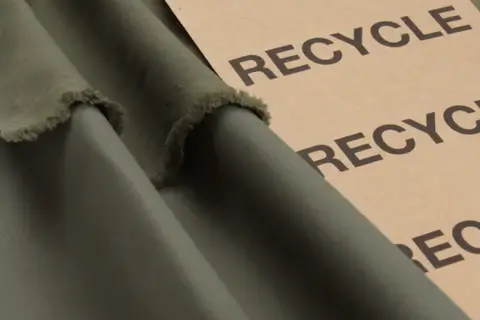
في وجودنا ، اعتنقنا الاستدامة في تصنيع ActiveWear ، حيث نقدم خيارات البوليستر المعاد تدويرها ، ومزيج من القطن العضوي ، وحلول التغليف الصديقة للبيئة. لقد أظهرت تجربتنا أن الاستدامة ليست جيدة للكوكب - إنها جيدة للعمل. اسمحوا لي أن أشارك ما تعلمناه حول حالة العمل المقنع للملابس النشطة المستدامة.
لماذا تصبح الاستدامة حتمية في السوق؟
تفضيلات المستهلك تتحول بشكل كبير نحو الخيارات المستدامة. العلامات التجارية التي تفشل في الاعتراف بمخاطر الاتجاه هذه تصبح قديمة لأن البدائل الواعية للبيئة تلتقط حصة السوق.
67 ٪ من المستهلكين العالميين يقولون إنهم يعتبرون الاستدامة عند شراء الملابس النشطة ، وترتفع هذه النسبة إلى 73 ٪ بين جيل الألفية. في فئة اللياقة والعافية على وجه التحديد ، يعبر 78 ٪ من المستهلكين عن قلقهم بشأن التأثير البيئي لمشترياتهم ، مما يجعل الاستدامة تمييزًا رئيسيًا في قرارات الشراء.
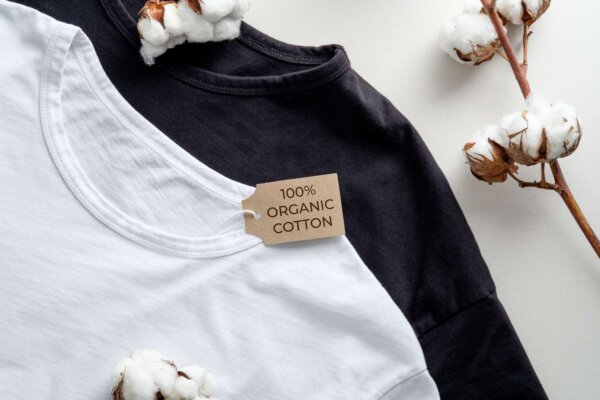
عندما بدأنا في تصنيع الملابس النشطة لأول مرة ، كانت الاستدامة تعتبر نقطة بيع متخصصة. اليوم ، أصبح توقعًا رئيسيًا ، خاصة في هذه الفئة. إليكم السبب في أن الاستدامة أصبحت ضرورة السوق:
تغيير قيم المستهلك
تكشف أبحاث السوق الأخيرة عن تحولات مثيرة في أولويات المستهلك:
| اتجاه المستهلك | نسبة مئوية | الآثار المترتبة على العمل |
|---|---|---|
| على استعداد لدفع المزيد مقابل المنتجات المستدامة | 73 ٪ | فرصة للتسعير المتميز |
| النظر في التأثير البيئي المهم في قرارات الشراء | 67 ٪ | الاستدامة كميزة تنافسية |
| البحث بنشاط العلامات التجارية ذات القيم البيئية القوية | 58 ٪ | فرصة ولاء العلامة التجارية |
| لقد تحولت العلامات التجارية على أساس المخاوف البيئية | 35 ٪ | خطر فقدان العملاء إذا لم يكن معالجة الاستدامة |
الاختلافات بين الأجيال
تفضيلات الاستدامة تختلف اختلافا كبيرا حسب الجيل:
- Gen Z (18-24): 83 ٪ يعتقدون أن الشركات يجب أن تعالج القضايا البيئية
- جيل الألفية (25-40): 73 ٪ يقولون أن المخاوف البيئية تؤثر على قرارات الشراء الخاصة بهم
- Gen X (41-56): 60 ٪ على استعداد لدفع المزيد مقابل المنتجات المستدامة
- مواليد الأطفال (57-75): 52 ٪ النظر في الاستدامة في قرارات الشراء
نظرًا لأن الأجيال الشابة التي تمثل السوق الأولية للأزياء النشطة ، فإن تفضيلات الاستدامة الأقوى لها وثيقة الصلة بهذه الفئة.
الشواغل النشطة المحددة
تواجه صناعة ActiveWear تدقيقًا خاصًا:
- الأقمشة الاصطناعية مثل البوليستر والنايلون هي القائمة على البترول وغير قابلة للتحلل
- يمكن أن تكون عمليات الإنتاج كثيفة المياه والكيميائية
- أدت أساليب الأزياء السريعة إلى إفراط في النفايات
- يرى المستهلكون بشكل متزايد فصلًا بين المنتجات التي تركز على العافية والممارسات الضارة بيئيًا
خلقت هذه المخاوف فرصة سوق كبيرة للعلامات التجارية التي يمكن أن تعالج الاستدامة بشكل أصلي مع الحفاظ على الأداء والأناقة.
للحصول على نظرة عامة شاملة على سوق ActiveWear واتجاهات المستهلك ، تفضل بزيارة تحليلنا التفصيلي: فهم الملابس النشطة & سوق ملابس اليوغا: الاتجاهات ، التركيبة السكانية & فرص المشترين B2B.
ما هي الفوائد المالية للملابس النشطة المستدامة؟
تتردد العديد من الشركات في الاستثمار في الاستدامة بسبب المخاوف بشأن التكاليف والعائدات. يساعد فهم حالة العمل الكاملة في تبرير هذه الاستثمارات.
يأتي العائد على الاستثمار من أجل Activewear المستدام من خلال قنوات متعددة: إمكانات الأسعار المتميزة (15-30 ٪ من نقاط السعر) ، وزيادة ولاء العملاء (ارتفاع معدلات الاحتفاظ بنسبة 27 ٪ للعلامات التجارية المستدامة) ، وتعزيز سمعة العلامة التجارية ، ومزايا وضع التجزئة ، وخفض مخاطر مشكلات الامتثال التنظيمية المستقبلية.
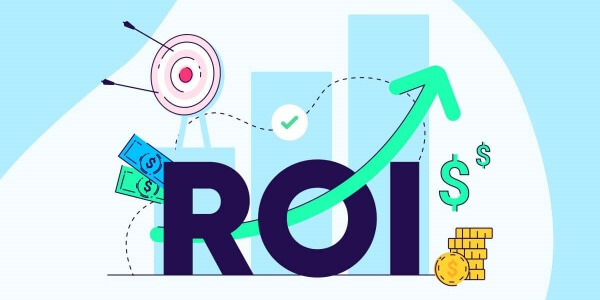
في الحصول على ، رأينا بشكل مباشر كيف توفر استثمارات الاستدامة عوائد أعمال ملموسة. ها هي حالة الأعمال الشاملة:
الفوائد المالية
إمكانات التسعير المتميز
تظهر أبحاث السوق أن المستهلكين سيدفعون المزيد مقابل المنتجات المستدامة:
- 73 ٪ سيدفعون ما لا يقل عن 10 ٪ للخيارات المستدامة
- 32 ٪ سيدفعون 25 ٪ أو أكثر للمنتجات ذات بيانات اعتماد بيئية قوية
- في ActiveWear على وجه التحديد ، تقوم الخيارات المستدامة بقيادة أقساط الأسعار من 15 إلى 30 ٪
زيادة حجم المبيعات
محركات الاستدامة قرارات شراء:
- 67 ٪ من المستهلكين هم أكثر عرضة لشراء منتجات محددة بوضوح على أنها صديقة للبيئة
- عادةً ما ترى العلامات التجارية المستدامة للأزياء النشط معدلات تحويل أعلى 15-25 ٪
- يقوم تجار التجزئة بالإبلاغ عن معدلات بيع من 10 إلى 20 ٪ لمنتجات الملابس النشطة المستدامة
تعزيز ولاء العملاء
الاستدامة تبني علاقات عملاء أقوى:
- تتمتع العلامات التجارية ذات بيانات اعتماد الاستدامة القوية بنسبة 27 ٪ من الاحتفاظ بالعملاء
- 41 ٪ من المستهلكين هم أكثر عرضة للتوصية بعلامات تجارية مستدامة للأصدقاء
- تزداد قيمة العميل مدى الحياة بنحو 22 ٪ للمنتجات المستدامة
تعزيز قيمة العلامة التجارية
فوائد السمعة
الاستدامة تعزز إدراك العلامة التجارية بشكل عام:
- 64 ٪ من المستهلكين (و 72 ٪ من جيل الألفية) لديهم صورة أكثر إيجابية للعلامات التجارية مع التزامات الاستدامة المثبتة
- التغطية الإعلامية أكثر احتمالا 2.5x للعلامات التجارية مع قصص الاستدامة الأصلية
- معدلات مشاركة وسائل التواصل الاجتماعي أعلى بنسبة 35 ٪ لمحتوى المنتج المستدام
التمايز التنافسي
في سوق Activewear المزدحمة بشكل متزايد:
- الاستدامة تخلق تمايزًا ذا مغزى يتجاوز الوظيفة الأساسية
- 52 ٪ من المستهلكين يعتبرون التأثير البيئي عند الاختيار بين منتجات ActiveWear المماثلة
- تساعد بيانات اعتماد الاستدامة على تجنب ضغوط أسعار السلع الأساسية
مزايا وضع البيع بالتجزئة
تجار التجزئة الرئيسيين بشكل متزايد يعطي أولويات المنتجات المستدامة:
- لقد أنشأ العديد من تجار التجزئة متطلبات الاستدامة للبائعين الجدد
- غالبًا ما يتم تخصيص وضع التجزئة المتميز للخيارات المستدامة
- يقدم بعض تجار التجزئة الدعم التسويقي خصيصًا للمنتجات المستدامة
التخفيف من المخاطر
الامتثال التنظيمي
يقلل اعتماد الاستدامة الاستباقية من المخاطر المستقبلية:
- أصبحت اللوائح البيئية أكثر صرامة على مستوى العالم
- يمنع التبني المبكر التغييرات القسرية المكلفة لاحقًا
- تقوم بعض الأسواق بتنفيذ قوانين مسؤولية المنتجين الممتد
حماية رد الفعل المستهلك
الاستدامة تحمي من الدعاية السلبية:
- تواجه العلامات التجارية بدون التزامات بيئية التدقيق المتزايد
- وسائل التواصل الاجتماعي تضخّم المخاوف البيئية بسرعة
- يمكن أن تسبب اتهامات غسل الخضرة أضرارًا كبيرة بالعلامة التجارية
للحصول على معلومات مفصلة حول استراتيجيات التسعير وهامش الربح للأزياء النشطة المستدامة ، استكشف تحليلنا: تعظيم العائد على الاستثمار: Activewear & يوجا ارتداء أسعار بالجملة ، هوامش البيع بالتجزئة & تحليل الربحية.
ما هي خيارات المواد المستدامة المتاحة للملابس النشطة؟
العديد من الشركات غير مدركة لمجموعة المواد المستدامة المتاحة الآن للأزياء النشطة. فهم هذه الخيارات أمر ضروري لاتخاذ قرارات مستنيرة لتطوير المنتجات.
تشمل مواد الملابس النشطة المستدامة البوليستر المعاد تدويرها (مصنوعة من زجاجات البلاستيك بعد المستهلك) ، والنايلون المعاد تدويره (غالبًا من شبكات الصيد ونفايات السجاد) ، والقطن العضوي (المزروع بدون مبيدات آفات ضارة) ، وأقمشة أداء طبيعية مبتكرة مثل Lyocell المستندة إلى الأوكالبتوس. يقدم كل منها خصائص أداء مختلفة وفوائد الاستدامة.
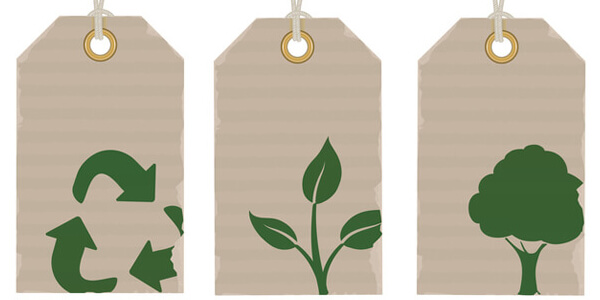
في الحصول على ، قمنا بتطوير ActiveWear باستخدام مواد مستدامة مختلفة. إليك تقييمنا للخيارات الرئيسية:
المواد الاصطناعية المعاد تدويرها
البوليستر المعاد تدويره
الفوائد البيئية:
- يحول زجاجات البلاستيك من مدافن النفايات والمحيطات
- يتطلب طاقة أقل من 30 إلى 50 ٪ من البوليستر البكر
- يقلل من الاعتماد على البترول
- ينتج 54 ٪ انبعاثات الكربون أقل من البوليستر البكر
خصائص الأداء:
- أداء متطابق تقريبًا للبوليستر البكر
- رطوبة ممتازة
- المتانة الجيدة واللون
- خصائص تجفيف سريع
اعتبارات العمل:
- 10-15 ٪ قسط التكلفة على البوليستر البكر
- قصة تسويقية قوية (زجاجات إلى بريطانية)
- متوفر على نطاق واسع في صفات مختلفة
- يمكن اعتمادها من خلال GRS (المعيار العالمي المعاد تدويره)
نايلون المعاد تدويره
الفوائد البيئية:
- غالبًا ما يكون مصنوعًا من شبكات الصيد أو نفايات السجاد أو نفايات ما قبل المستهلك
- يقلل من النفايات في المحيطات ومقامات النفايات
- يتطلب 80 ٪ من الماء من النايلون البكر
- ينتج 90 ٪ أقل من CO₂ من النايلون العذراء
خصائص الأداء:
- مماثلة للنايلون البكر في معظم الخصائص
- امتداد ممتازة والشفاء
- يشعر اليد الناعمة
- متينة ومقاومة للتآكل
اعتبارات العمل:
- 15-25 ٪ علاوة على التكلفة على النايلون العذراء
- توافر محدود ولكن متزايد
- قصة مقنعة بشكل خاص لنايلون نفايات المحيطات
- يمكن اعتمادها من خلال GRS
مواد طبيعية وشبه التوافق
القطن العضوي
الفوائد البيئية:
- نمت بدون مبيدات آفات أو أسمدة اصطناعية
- يستخدم بنسبة 88 ٪ من الماء من القطن التقليدي
- يعزز صحة التربة والتنوع البيولوجي
- يقلل من تعرض المزارعين للمواد الكيميائية الضارة
خصائص الأداء:
- التهوية الطبيعية والراحة
- يشعر اليد الناعمة
- خصائص hypoallergenic
- الأفضل لأنشطة شدة منخفضة إلى معتدلة
اعتبارات العمل:
- 20-30 ٪ قسط التكلفة على القطن التقليدي
- يتطلب المزج مع الإيلاستين للتمدد
- يمكن اعتمادها من خلال GOTS (معيار النسيج العضوي العالمي)
- نداء قوي للمستهلكين الواعيين للبيئة
ليوسيل/تينكل
الفوائد البيئية:
- مصنوع من لب الخشب الذي تم حصاده بشكل مستدام
- عملية إنتاج الحلقة المغلقة تعيد تدوير 99 ٪ من المذيبات
- مادة قابلة للتحلل
- يتطلب ماء أقل من القطن
خصائص الأداء:
- إدارة الرطوبة الطبيعية
- ملمس ناعم حريري
- التنفس وتنظيم درجة الحرارة
- بشكل طبيعي يمنع النمو البكتيري
اعتبارات العمل:
- 15-25 ٪ قسط التكلفة على الأقمشة التقليدية
- غالبًا ما تمتزج مع الألياف الأخرى للأداء
- متزايد التوافر والابتكار
- إمكانات تحديد المواقع الفاخرة
مخطط مقارنة المواد
| مادة | قسط التكلفة | مستوى الأداء | أفضل ل |
|---|---|---|---|
| البوليستر المعاد تدويره | 10-15 ٪ | ممتاز | أنشطة عالية الكثافة ، إدارة الرطوبة |
| نايلون المعاد تدويره | 15-25 ٪ | ممتاز | اليوغا ، أنشطة الاستوديو ، قطع الضغط |
| مزيج القطن العضوي | 20-30 ٪ | جيد | أنشطة منخفضة التأثير ، الجلد الحساس |
| ليوسيل/تينكل | 15-25 ٪ | جيد جدًا | تحديد المواقع المتميزة ، تنظيم درجة الحرارة |
للحصول على معلومات مفصلة عن مواد ActiveWear والتكنولوجيا ، تفضل بزيارة دليلنا الشامل: Activewear & تقنية ارتداء اليوغا & المواد: دليل المشتري لأقمشة الأداء ، البناء & متانة.
كيف يمكنك تنفيذ استراتيجية ActiveWear المستدامة؟
العديد من الشركات تكافح مع تنفيذ الاستدامة بفعالية. بدون نهج استراتيجي ، يمكن أن تكون الجهود مجزأة أو غير فعالة أو عرضة لاتهامات غسل الأخضر.
يتطلب تنفيذ استراتيجية Activewear المستدامة الناجحة اتباعًا تدريجيًا: إجراء تقييم للاستدامة للمنتجات الحالية ، وتحديد المجالات ذات الأولوية للتحسين ، وتطوير أهداف الاستدامة الواضحة ، واختيار المواد والعمليات المناسبة ، والحصول على الشهادات ذات الصلة ، وإنشاء تسويق أصيل يتجنب غسله الأخضر.
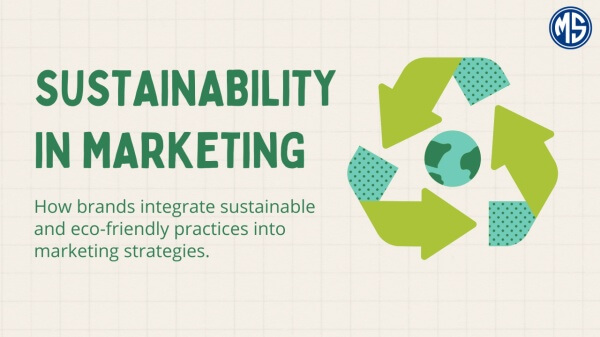
في الحصول على شركائنا ، نساعد شركائنا على تطوير وتنفيذ استراتيجيات استدامة فعالة. هذا هو نهجنا الموصى به:
المرحلة 1: التقييم وتحديد الأهداف
ابدأ بفهم تأثيرك البيئي الحالي:
- تقييم دورة حياة المنتج: تقييم التأثير البيئي عبر دورة حياة المنتج بأكملها
- تحليل المواد: تقييم المواد الحالية لمخاوف الاستدامة
- تعيين سلسلة التوريد: تحديد النقاط الساخنة البيئية الرئيسية في سلسلة التوريد الخاصة بك
- القياس منافس: فهم ما يفعله الآخرون في السوق
حدد أهداف الاستدامة الواضحة والقابلة للقياس:
- أهداف المواد: e.g., "50% recycled content by 2024"
- الحد من الكربون: e.g., "30% reduction in carbon footprint by 2025"
- الحد من النفايات: e.g., "Zero waste to landfill from production by 2023"
- الحفاظ على المياه: e.g., "40% reduction in water usage by 2024"
المرحلة 2: استراتيجية التنفيذ
تطوير خطة تنفيذ تدريجي:
استبدال المواد
- ابدأ بالمنتجات الأساسية: ابدأ مع أكثر الكتب مبيعًا للحصول على أقصى تأثير
- النهج الهجين: النظر في مزيج من المواد المستدامة والتقليدية كمرحلة انتقالية
- اختبار الأداء: ضمان بدائل مستدامة تلبي متطلبات الأداء
- تحليل التكلفة: حساب العائد على الاستثمار بما في ذلك فرص قسط الأسعار المحتملة
تحسينات سلسلة التوريد
- اختيار شريك التصنيع: اختر الشركاء مع بيانات اعتماد الاستدامة
- تحسين العملية: تحديد فرص الحد من المياه والطاقة
- كفاءة النقل: تحسين طرق الشحن والتعبئة والتغليف
- الحد من النفايات: تنفيذ كفاءة القطع وإعادة تدوير الخردة
استراتيجية التصديق
- تحديد الشهادات ذات الصلة: حدد الشهادات التي تطابق مطالباتك
- تطوير أنظمة التوثيق: إنشاء عمليات لتتبع مطالبات الاستدامة والتحقق منها
- التحقق من الطرف الثالث: إشراك التحقق المستقل لمطالبات الاستدامة
- تحسين مستمر: خطة لصيانة الشهادات المستمرة والتوسع
المرحلة 3: التسويق والاتصالات
تطوير رسائل الاستدامة الأصلية:
- كن محددًا: استخدم الحقائق الملموسة بدلاً من الادعاءات الغامضة
- كن شفافا: لا تزال المناطق التي لا تزال تتحسن
- كن تعليميًا: مساعدة المستهلكين على فهم تأثير اختياراتهم
- تجنب غسل الأخضر: لا تبالغ في الفوائد البيئية
قنوات الاتصال الفعالة:
- وضع العلامات على المنتج: واضحة معلومات الاستدامة عن العلامات والتعبئة والتغليف
- محتوى الموقع: قسم الاستدامة المخصص بمعلومات مفصلة
- وسائل التواصل الاجتماعي: تحديثات منتظمة حول مبادرات الاستدامة والتقدم
- تدريب الموظفين: تأكد من أن أعضاء الفريق يمكنهم شرح ميزات الاستدامة بدقة
إطار حساب العائد على الاستثمار
عند تقييم استثمارات الاستدامة ، فكر في هذا الإطار:
| فئة الاستثمار | زيادة التكاليف النموذجية | عودة محتملة | فترة الاسترداد |
|---|---|---|---|
| المواد المعاد تدويرها | 10-15 ٪ | 15-25 ٪ قسط السعر | فوري إلى 6 أشهر |
| المواد العضوية | 20-30 ٪ | 20-30 ٪ أقساط الأسعار | فوري إلى 6 أشهر |
| عبوة مستدامة | 5-15 ٪ | 5-10 ٪ تحسين التحويل | 6-12 أشهر |
| شهادة الاستدامة | 2000-10،000 دولار سنويا | زيادة 10-20 ٪ من متاجر التجزئة | 6-18 أشهر |
للحصول على إرشادات حول تطوير خط Activewear المستدام الخاص بك ، تفضل بزيارة موردنا التفصيلي: علامتك التجارية ، منتجك: الدليل الكامل للملصقات الخاصة (OEM/ODM) Activewear & اليوغا ارتداء التصنيع.
خاتمة
قضية العمل الخاصة بالملابس النشطة المستدامة مقنعة ومتعددة الأوجه. إلى جانب تلبية الطلب المتزايد للمستهلكين على المنتجات المسؤولة عن البيئة ، توفر مبادرات الاستدامة فوائد عمل ملموسة من خلال فرص التسعير المتميزة ، وزيادة ولاء العملاء ، وتعزيز قيمة العلامة التجارية ، والتخفيف من المخاطر.
في امتزازنا ، نحن ملتزمون بدعم شركائنا في تطوير الملابس النشطة المستدامة حقًا والتي توفر المزايا البيئية والتجارية. من خلال تبني الاستدامة كاستراتيجية تجارية أساسية بدلاً من فكرة التسويق ، يمكن للعلامات التجارية أن تضع نفسها لنجاح طويل الأجل في هذا السوق المتطور بسرعة.
للحصول على نظرة عامة شاملة على فئة ActiveWear بأكملها ، بما في ذلك اتجاهات السوق وفرص العمل ، تفضل بزيارة دليل B2B النهائي للمصادر & بيع Activewear & ارتداء اليوغا.
الأسئلة المتداولة (الأسئلة الشائعة)
ما هي أهم ميزة الاستدامة للمستهلكين النشطين؟
في حين تختلف التفضيلات حسب القطاع ، تظهر الأبحاث أن المحتوى المعاد تدويره (وخاصة البوليستر المعاد تدويره من الزجاجات البلاستيكية) هو ميزة الاستدامة الأكثر قيمة عالميًا ، تليها انخفاض استخدام المياه والمواد العضوية.
ما مقدار المستهلكين على استعداد لدفع ثمن ملابس نشطة مستدامة؟
تشير أبحاث السوق إلى أن 73 ٪ من المستهلكين سيدفعون 10 ٪ على الأقل للخيارات المستدامة ، في حين أن 32 ٪ سيدفعون أقساط بنسبة 25 ٪ أو أعلى للمنتجات ذات بيانات اعتماد بيئية قوية.
ما هي شهادات الاستدامة الأكثر قيمة في ActiveWear؟
GRS (المعيار المعاد تدويره العالمي) هو الأكثر قيمة بالنسبة لمطالبات المحتوى المعاد تدويره ، و GOTS (معيار النسيج العضوي العالمي) للمواد العضوية ، و Bluesign® للإنتاج المسؤول عن البيئة بشكل عام. يوفر Oeko-Tex Standard 100 مصداقية أمان أساسية.
كيف يمكن أن تتنافس العلامات التجارية الصغيرة مع الشركات الكبيرة على الاستدامة؟
يمكن للعلامات التجارية الصغيرة في كثير من الأحيان تنفيذ مبادرات الاستدامة بسرعة أكبر وأصلية من الشركات الكبيرة. ركز على التواصل الشفاف ، وفوائد بيئية محددة ، وخلق اتصالات حقيقية مع المستهلكين ذوي التفكير في الاستدامة.
هل من الأفضل التركيز على المواد المستدامة أو التصنيع المستدام؟
كلاهما مهم ، ولكن عادة ما يكون للمواد المستدامة رؤية المستهلك أكثر إلحاحًا وتأثير التسويق. ومع ذلك ، فإن النهج الشامل الذي يعالج كل من المواد وعمليات التصنيع يخلق أقوى وضع الاستدامة.
كيف يمكنني تجنب اتهامات غسيل الخضرة عند تسويق الملابس النشطة المستدامة؟
كن محددًا بشأن المطالبات البيئية ، وقدم أدلة وشهادات لدعمها ، والاعتراف بالجالات التي لا تزال محسنة ، والتركيز على التقدم بدلاً من الكمال. الشفافية حول رحلة الاستدامة الخاصة بك تبني المصداقية.
